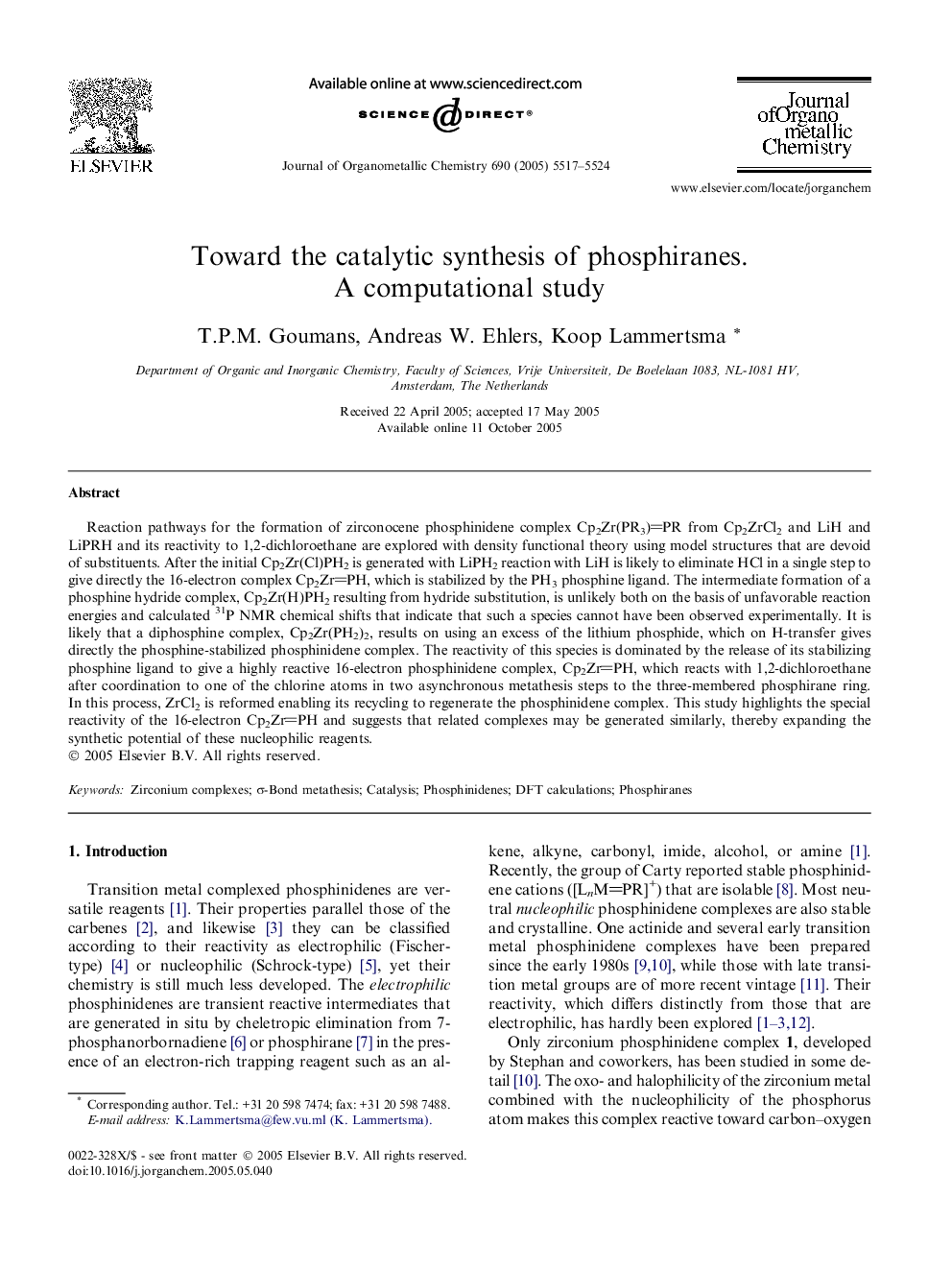| Article ID | Journal | Published Year | Pages | File Type |
|---|---|---|---|---|
| 1326062 | Journal of Organometallic Chemistry | 2005 | 8 Pages |
Reaction pathways for the formation of zirconocene phosphinidene complex Cp2Zr(PR3)PR from Cp2ZrCl2 and LiH and LiPRH and its reactivity to 1,2-dichloroethane are explored with density functional theory using model structures that are devoid of substituents. After the initial Cp2Zr(Cl)PH2 is generated with LiPH2 reaction with LiH is likely to eliminate HCl in a single step to give directly the 16-electron complex Cp2ZrPH, which is stabilized by the PH3 phosphine ligand. The intermediate formation of a phosphine hydride complex, Cp2Zr(H)PH2 resulting from hydride substitution, is unlikely both on the basis of unfavorable reaction energies and calculated 31P NMR chemical shifts that indicate that such a species cannot have been observed experimentally. It is likely that a diphosphine complex, Cp2Zr(PH2)2, results on using an excess of the lithium phosphide, which on H-transfer gives directly the phosphine-stabilized phosphinidene complex. The reactivity of this species is dominated by the release of its stabilizing phosphine ligand to give a highly reactive 16-electron phosphinidene complex, Cp2ZrPH, which reacts with 1,2-dichloroethane after coordination to one of the chlorine atoms in two asynchronous metathesis steps to the three-membered phosphirane ring. In this process, ZrCl2 is reformed enabling its recycling to regenerate the phosphinidene complex. This study highlights the special reactivity of the 16-electron Cp2ZrPH and suggests that related complexes may be generated similarly, thereby expanding the synthetic potential of these nucleophilic reagents.
Graphical abstractThe formation and reactivity of a zirconocene phosphinidene is investigated to explore its potential as a catalyst in the synthesis of phosphiranes.Figure optionsDownload full-size imageDownload as PowerPoint slide
